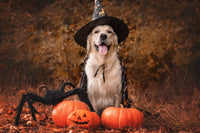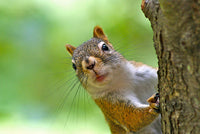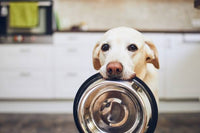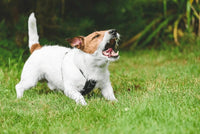Subtotal
CAD $0.00
or
Gastic-dilatation-volvulus (also known as GDV) is when a bloating stomach twists or rotates, a life-threatening condition in dogs. It's name is long, but perfectly describes what occurs and it's very serious business.
It's cause isn't very clear, though, but it often occurs in older, large breed, deep-chested dogs who receive one big meal a day or have relatives that have endured it. Any dog can be affected, but the most common breeds are Great Danes, Weimaraners, St. Bernards, Irish setters, and Gordon setters. Interestingly, aggressive dogs seem to be at higher risk,
writes Dr. Ron Castron, DVM, PhD, CVA. There also appears to be an increased risk if a susceptible dog is fed primarily dry kibble dog food in one or two large portions each day, compared with those that are allowed to eat smaller meals throughout the day or are fed canned foods. In addition, high fat content in foods has been associated with increased risk.
Initially, dogs may anxiously look at the abdomen along with standing and stretching, panting and drooling. As it progresses, they will have more intense focus on their distended abdomen, unproductive vomiting, and difficulty breathing. These later signs reflect the fact that GDV is a serious problem that affects the whole body. The bloating stomach puts pressure on the blood vessels, reducing the ability of the blood to properly circulate. Pressure on the diaphragm makes breathing difficult. When the stomach rotates, the blood circulation in the body and stomach is further compromised. Toxins begin to be released. Irregular heartbeats can occur.
The sooner GDV is diagnosed and treated , the better. No time should be wasted, so contact your vet immediately if you believe your dog has GDV.

Announcing the Winners of Our 2025 Pawsome Costume Contest!

The holidays are right around the corner — a time filled with friends, family, and festive chaos. But if your dog barks nonstop at visitors, delivery drivers, or even the sound of wrapping paper, it can quickly turn your joyful season into a noisy one.

How to Keep Racoons, Skunks, and Squirrels Away - Without Traps or Poison

Why Dogs Shouldn't Eat Turkey: What Every Pet Owner Should Know

You love your dog—but the constant barking every time someone walks past the fence? Not so much.